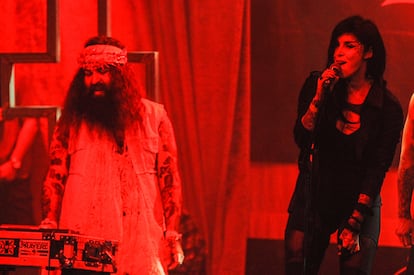Pachucos, cholos, and goths: A look at the new border music
They’re not Mexicans or Americans. They’re not punks, rappers, or goths. They’re all that and more. The rich cultural mix of Chicano culture is a source of endless creativity that has brought us truly delirious, diverse, and fascinating musical styles


Mambo, soul, rock, and all of its variants. Even cumbia, norteño music, and techno. For the Chicano community, every type of music is sifted through the border filter that defines its reality, as a subconscious way of resisting the overwhelming influence of homogenized American culture.
Las Vegas, San Antonio, Dallas, Houston, San Diego, Los Angeles, and even Chicago and New York by way of Phoenix, Denver, and Albuquerque. This is the Chicano diaspora, a never-ending search for worth and identity in an American society that has now embraced Chicano culture after years of segregation and oppression.
This may explain why the Chicano soul is still so alive and has evolved so differently from the original American soul, as it absorbed rockabilly music, Mexican American punk rock from Los Angeles, and even styles like mambo or cumbia. For the Chicano, musical appropriation is part of who he is — a mixture, a borderline, an undefined middle point. Or rather the Chicano’s indefinable quality is what defines him.
But this doesn’t mean that Chicano music sounds like everything and nothing — on the contrary. Just listen to Ritchie Valens, Los Lobos, Linda Ronstadt, or even more recent musicians like Omar Apollo, Tatiana Hazel, Avalon, and Temporex.
Chicano artists have not limited themselves to rap, street music, or romantic ballads sung in “Spanglish.” The diversity of the new generations has produced some increasingly bizarre and shocking mixes. One of the most notorious examples is “chologoth,” a style where the predominantly white and Anglo goth culture is merged with pop, electronic synthesizers, hard rock, and the cholo imaginary of Californian Chicano gang culture. Who makes this kind of music? The now legendary duo, Prayers.
Raised in the chaotic Mexican American Sherman Heights neighborhood of San Diego, Prayers founder Rafael Reyes was exposed to gangs and music from an early age. One day, when Rafael and his bandmate were asked to perform in northern California, his gang mates warned him that it might be dangerous to play their music in hostile territory.
But Reyes believed in the power of his music, an unlikely mix of Mexican American metal and dark European aesthetics that he dubbed “cholo goth.” The gamble paid off and the rival gang gave the duo temporary immunity due to their shared Mexican heritage and a love of music.

Now an essential part of the contemporary Hispanic music scene, Prayers has successfully integrated the dark and decadent imagery of artists like Bauhaus, Christian Death, and Depeche Mode with the street gang iconography of life in one of the most inhospitable parts of the southwestern border region, where hip hop and soul rule.
The flair and energy of Prayers have enabled the group to emerge from a marginal, underground existence in 2013, and become a model of musical creativity. Their rough and harsh lyrics communicate a very human message — believe in yourself, overcome adversity, and stay true to your roots.
Sobre la firma
